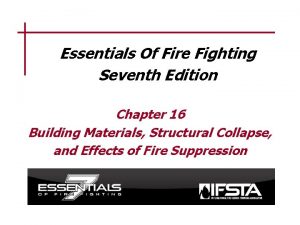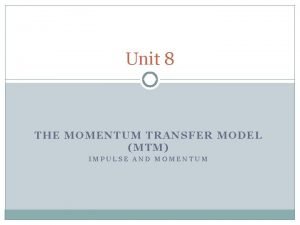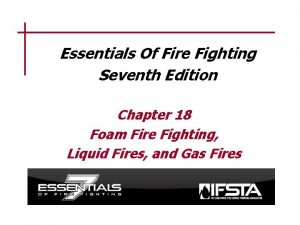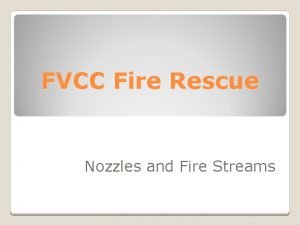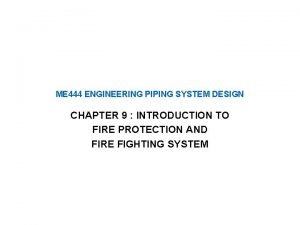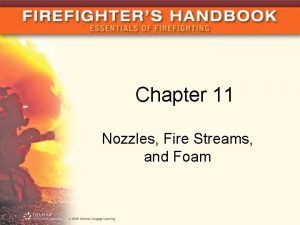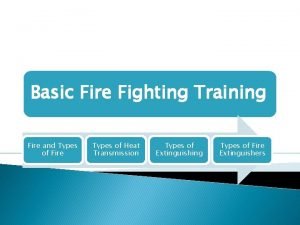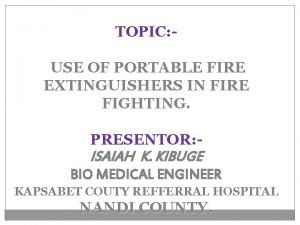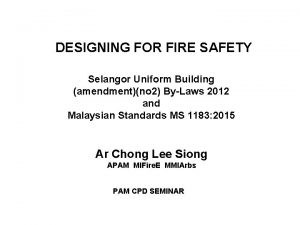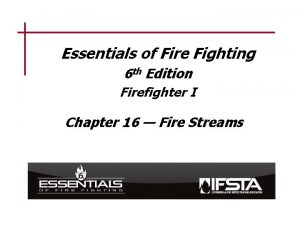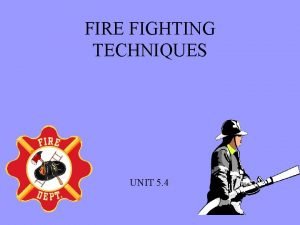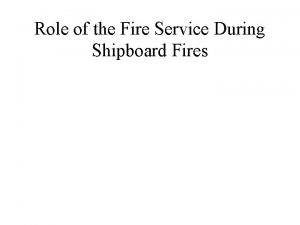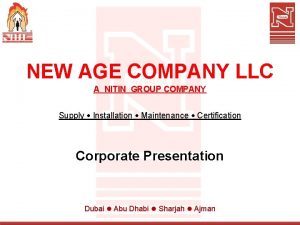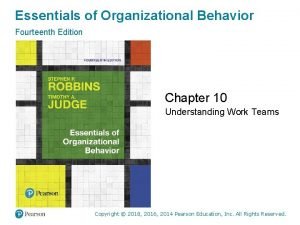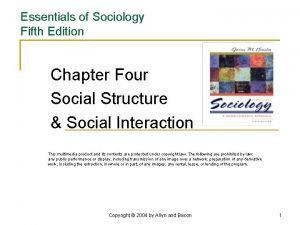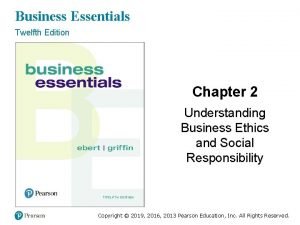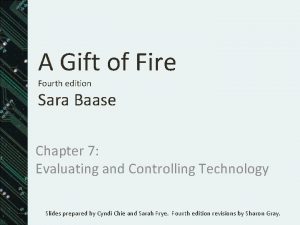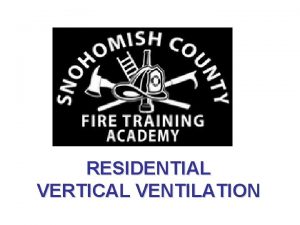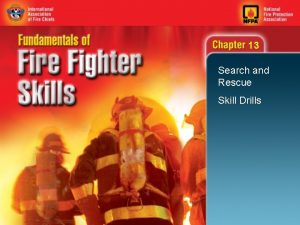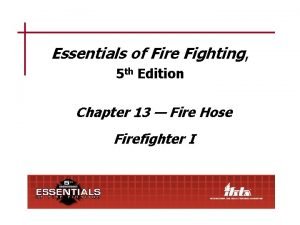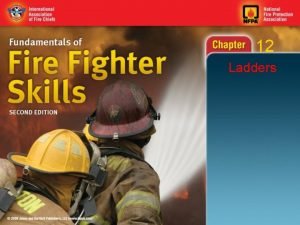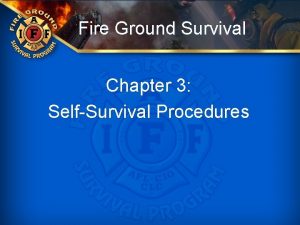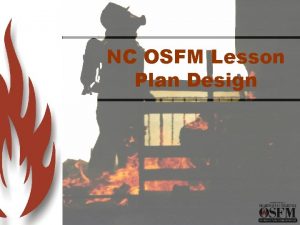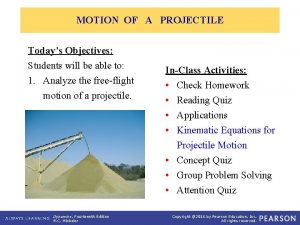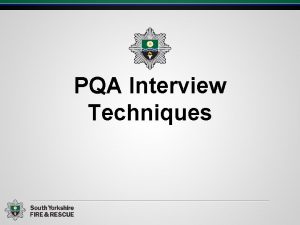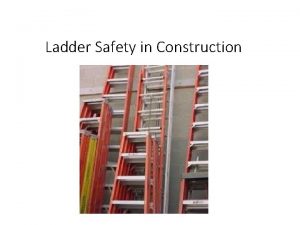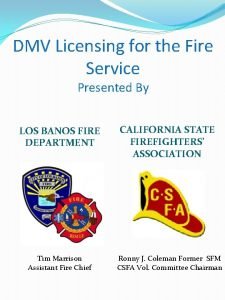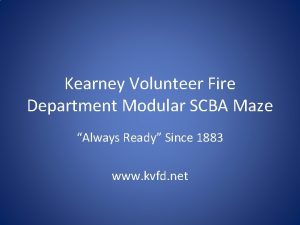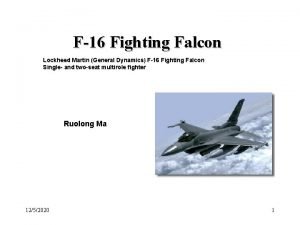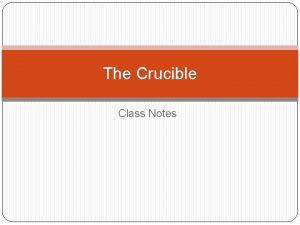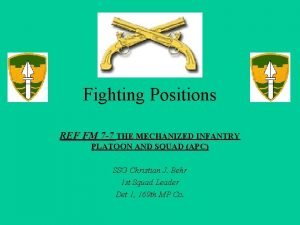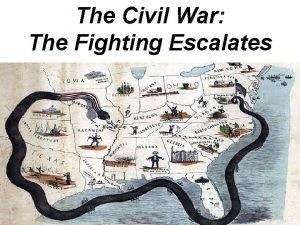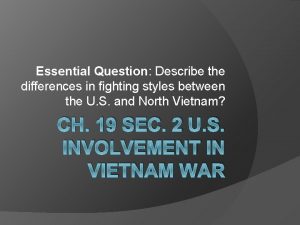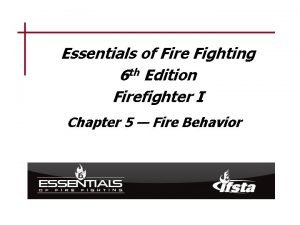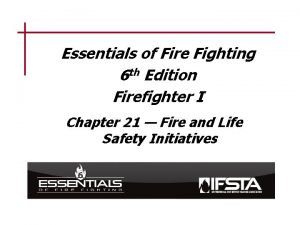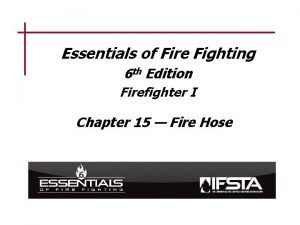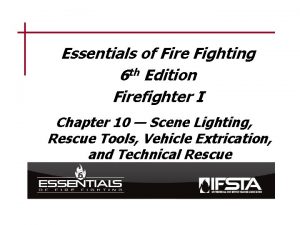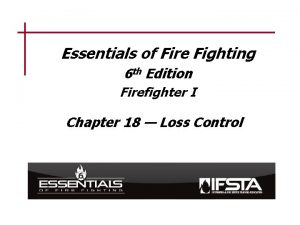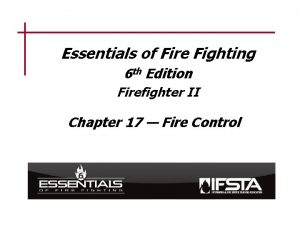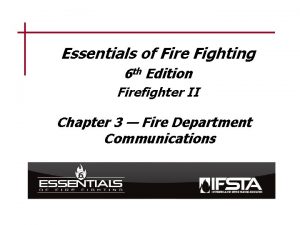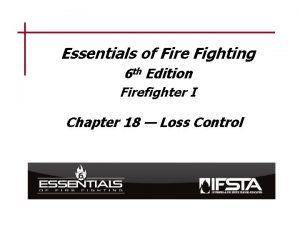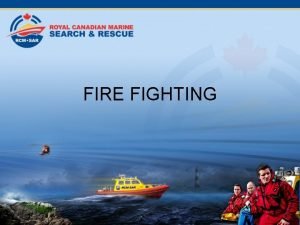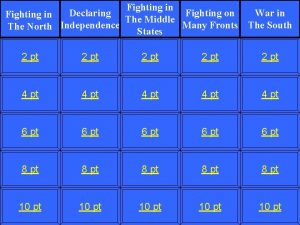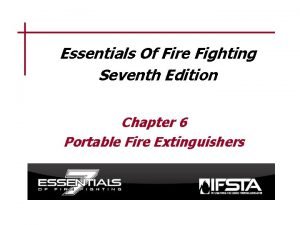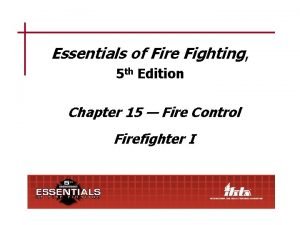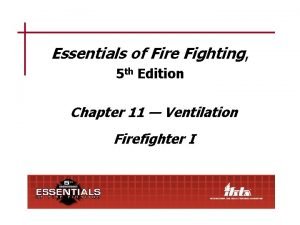Essentials of Fire Fighting 6 th Edition Firefighter
































































- Slides: 64

Essentials of Fire Fighting 6 th Edition Firefighter I Chapter 17 — Fire Control

Learning Objective 1 Describe initial factors to consider when suppressing structure fires. 17– 1

Selecting strategies and coordinating resources is based on three priorities. Courtesy of Bob Esposito 17– 2

Offensive suppression strategies usually entail interior operations. Factors that help determine tactics Value Time Size 17– 3 Objective Rescue and/or extinguishm ent

Defensive suppression strategies are selected based on several factors. No threat to occupant life exists Sufficient resources are not available for offensive strategy Occupants are not savable Property is not salvageable Danger of structural collapse Offensive strategy would endanger lives of firefighters 17– 4

Defensive suppression strategies work to isolate or stabilize the incident. Courtesy of Chris Mickal 17– 5

Defensive strategies are employed when certain conditions are present. Excessive volume of fire Structural deterioration Risk outweighs benefit Unfavorable wind conditions 17– 6

Strategic transitions during suppression may occur at any time. Defensive to offensive Offensive to defensive • Follow guidelines during 17– 7

Resource coordination is important during several points of fire attack. Victim recovery efforts Forcible entry Search and rescue operations Cause determination Loss control Ventilation Control of utilities 17– 8

Correct hoseline selection is important for fire suppression operations. Fire conditions and other factors Critical for efficiency, safety For interior – Dictated by area involved, fire load (Cont. ) 17– 9

CAUTION A hoseline no smaller than 1½-inch (38 mm) should be used on an interior fire. 17– 10

Nozzle selection is based on several considerations found on scene. Courtesy of Ron Jeffers Interior fire attack Exterior attack Water pressure, water quantity Nozzle reaction 17– 11

REVIEW QUESTION What initial factors must be considered when suppressing structure fires? 17– 12

Learning Objective 2 Summarize considerations taken when making entry. 17– 13

You should know the considerations for hoseline use and placement when making entry. Decision made by • IC • Supervisor Place to protect • Firefighters • Occupants • Property 17– 14 Factors used to place • Wind direction and velocity • Building conditions • Initial fire location • Location of occupants • Exposures

There are several tasks every member should perform before entry. Conduct quick size up Maintain high situational awareness Be aware of pre-entry considerations 17– 15

You should understand what you may need to fulfill your role during entry. Interior fire crew needs tools, equipme nt to: Open interior doors Check concealed spaces for fire extension Make an emergency exit 17– 16

The firefighter assigned to the nozzle should do several tasks. Open nozzle fully to ensure adequate flow Check pattern setting Bleed air from hoseline 17– 17

CAUTION DO NOT open the door until you have a charged hoseline and are ready to control the conditions encountered. 17– 18

There are several facts about making entry tactics that you should know. When making interior attack on structure fire If fire is ventilation controlled, door is opened Traditional guideline – Attack from unburned side 17– 19 When opening door Wind creates airflow patterns within structure

There are several general tactics for making entry that you should know. Wind creates airflow patterns within structure Directly increase fire expansion and cause firefighter casualties Attack with wind to back Determine best entry point based upon wind direction 17– 20

REVIEW QUESTION What are the factors that must be considered when making entry? 17– 21

Learning Objective 3 Describe direct attack, indirect attack, combination attack, and gas cooling techniques. 17– 22

Direct attack uses water most efficiently on free-burning fires. 17– 23

Indirect attack is used when entry is not possible due to intense heat. Courtesy of Dick Giles 17– 24

Combination attack uses strategies from both direct and indirect attack. 17– 25

REVIEW QUESTION How do direct attack and combination attack techniques compare with one another? 17– 26

Gas cooling is a way of reducing heat release from the hot gas layer. 17– 27

REVIEW QUESTION What are the main differences between indirect attack and gas cooling techniques? 17– 28

Learning Objective 4 Describe safety considerations that must be identified for upper level structure fires. 17– 29

Fires in upper levels of structures can present unique considerations. Structure s lacking standpip es Structure s with standpip es 17– 30 Can require large numbers of personne l Use of elevators

REVIEW QUESTION How does the presence or absence of a standpipe system impact upper level structure fires? 17– 31

Learning Objective 5 Explain actions taken when attacking belowground structure fires. 17– 32

Belowground structures fires may occur in residential basements. 17– 33

There are several factors that may contribute to basement fires. Spaces • Totally unfinished, partially finished, completely finished Fuel loading Age of exposed joists 17– 34 (Cont. )

There are several factors may contribute to basement fires. Hidden path for fire Use of lightweight construction materials Life safety hazards created Initial size-up important 17– 35

WARNING Basement fires weaken the main floor of a structure creating a constant danger of structural collapse. 17– 36

Floor assemblies over basements may collapse before firefighters arrive. Courtesy of NIST 17– 37

CAUTION Thermal imagers (TI) will not always provide an accurate assessment of structural integrity of the floor system. 17– 38

Residential basement fires can present other considerations. Access Enclosed stairwell may act as flow path 1½- to 1¾-inch (38 mm to 45 mm) hoseline If ventilation limited May not provide enough cooling to Added ventilation overcome venting may result in gases flashover 17– 39

REVIEW QUESTION What are the main actions that should be taken when attacking a belowground structure fire? 17– 40

Belowground fires can also occur in commercial basements and subfloors. 17– 41

REVIEW QUESTION How quickly can floor assemblies over basements reach a point of collapse? 17– 42

Learning Objective 6 Discuss methods of fire control through exposure protection and controlling building utilities. 17– 43

Exposure protection depends on location and resources available. Interior Exterior • Closing doors, other openings • Proper use of ventilation • Passive forms • Remove endangered persons, property, items • Apply protective spray between fire and exposure 17– 44

Controlling building utilities helps control the fire and limits damage. Sources Must be disconnected when fire in structure Commercial power supply 17– 45 (Cont. )

DISCUSSION QUESTION Can fire department personnel remove the meter box, if necessary? 1– 46

Controlling building utilities helps control the fire and limits damage. Courtesy of Ron Moore and Mc. Kinney (TX) FD 17– 47 (Cont. )

WARNING Solar panels generate current whenever there is a light source (sunlight, moonlight, artificial lighting) and are always energized. 17– 48

Controlling building utilities helps control the fire and limits damage. Courtesy of Ron Moore and Mc. Kinney (TX) FD Wind turbine s Fuel-powered generators (Cont. ) 17– 49

Controlling building utilities helps control the fire and limits damage. (Cont. ) 17– 50

CAUTION Natural gas that leaks underground in wet soil can lose its odorant and become difficult to detect without instruments. 17– 51

Controlling building utilities helps control the fire and limits damage. Water Liquefied petroleum gas 17– 52

REVIEW QUESTION How can using exposure protection or controlling building utilities help in fire control? 17– 53

Learning Objective 7 Describe steps taken when supporting fire protection systems at protected structures. 17– 54

Supporting fire protection systems is accomplished through several steps. Connectin Shutting g to FDC a control valve 17– 55 Stopping the flow from a sprinkler

REVIEW QUESTION What are the steps that must be taken when supporting a fire protection system at a protected structure? 17– 56

Learning Objective 8 Explain considerations taken when deploying, supplying, and staffing master stream devices. 17– 57

Deploying master stream devices requires an understanding of several considerations. Situations deployed in Main uses Proper placement Effective for exposure protection to other structures 17– 58

Supplying master streams can be accomplished in several ways. Nothing less than two 2½-inch (65 mm) hoselines Temporarily with one 2½-inch (65 mm) hoseline while adding others 17– 59 Third line may be needed Operation consumes great quantities of water

CAUTION Added water weight from master stream operations increases the potential for structural collapse. 17– 60

Staffing master stream devices usually requires two firefighters. 17– 61

Elevated master streams are used for upper stories in multistory buildings. Courtesy of Chris Mickal 17– 62

REVIEW QUESTION How should a master stream device be properly deployed? 17– 63
 Firefighter essentials 7th edition
Firefighter essentials 7th edition Impulse momentum bar chart
Impulse momentum bar chart Re prefix meaning
Re prefix meaning At a bulk transport incident firefighters must
At a bulk transport incident firefighters must Fire drill ppt
Fire drill ppt Broken stream nozzle
Broken stream nozzle Nfpa 13 sprinkler pipe sizing chart
Nfpa 13 sprinkler pipe sizing chart Piercing nozzles fire fighting
Piercing nozzles fire fighting Mechanical ventilation firefighting
Mechanical ventilation firefighting Siphip
Siphip Method of fire fighting
Method of fire fighting Class a combustible material
Class a combustible material Purpose group ubbl
Purpose group ubbl Broken stream fire fighting
Broken stream fire fighting Fire fighting methods
Fire fighting methods Foampro fire fighting
Foampro fire fighting Shipboard fire fighting organization
Shipboard fire fighting organization New age fire fighting company dubai
New age fire fighting company dubai Criminal justice wedding cake diagram
Criminal justice wedding cake diagram Essentials of investments 11th edition
Essentials of investments 11th edition The time/space collaboration and social tool matrix
The time/space collaboration and social tool matrix Business essentials 12th edition
Business essentials 12th edition Types of group
Types of group William stallings network security essentials 5th edition
William stallings network security essentials 5th edition Essentials of sociology 5th edition
Essentials of sociology 5th edition Cryptographic systems are generically classified by
Cryptographic systems are generically classified by Business essentials 12th edition
Business essentials 12th edition Business essentials 12th edition
Business essentials 12th edition Using mis 10th edition
Using mis 10th edition Using mis (10th edition) 10th edition
Using mis (10th edition) 10th edition Neo luddite criticisms of computer technology
Neo luddite criticisms of computer technology A gift of fire 4th edition
A gift of fire 4th edition Vertical ventilation cut sequence
Vertical ventilation cut sequence Mine rescue 13-3
Mine rescue 13-3 Horseshoe hose load
Horseshoe hose load Two-person drag
Two-person drag Trussed beam ladder
Trussed beam ladder Grab lives mnemonic
Grab lives mnemonic Nfpa lesson plans
Nfpa lesson plans Firefighter mayday acronyms
Firefighter mayday acronyms Firefighter hose
Firefighter hose What does pqa mean
What does pqa mean Firefighter
Firefighter Parts of ladder
Parts of ladder What is a firefighter endorsement dmv
What is a firefighter endorsement dmv Lafd interview score
Lafd interview score Firefighter maze plans
Firefighter maze plans Reichstag fire who was the fire starter
Reichstag fire who was the fire starter Race fire safety
Race fire safety Canvas connection hvac
Canvas connection hvac Fire hose reel signage standards
Fire hose reel signage standards A-e rwi
A-e rwi Montague william lll
Montague william lll General dynamics f-16cm fighting falcon
General dynamics f-16cm fighting falcon Social class in the crucible
Social class in the crucible Telenor kontaktcenter
Telenor kontaktcenter God is fighting for us pushing back the darkness
God is fighting for us pushing back the darkness Disastrous
Disastrous Kite fighting afghanistan
Kite fighting afghanistan Fighting position reference
Fighting position reference Dove
Dove The civil war the fighting escalates
The civil war the fighting escalates What does romeo do when he comes upon them
What does romeo do when he comes upon them Fighting hunger feeding hope
Fighting hunger feeding hope Vietnam fighting style
Vietnam fighting style
